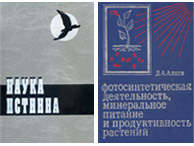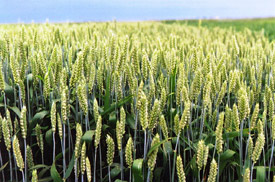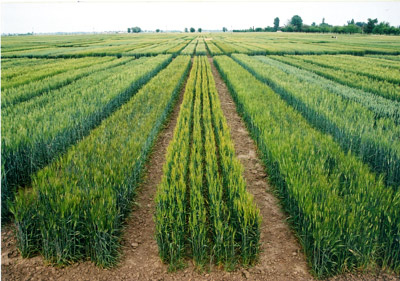
Last news
[20.06.2008]НАУЧНЫЙ РУКОВОДИТЕЛЬ И КОНСУЛЬТАНТ ДИССЕРТАНТОВ
[20.06.2008]НАУКА
ИСТИННА
[20.06.2008]Awards
[20.06.2008]Brief essay on scientific activity of Professor JALAL ALIYEV
[17.06.2008]Список книг Д.А.Алиева
Announcements
20.06.2008
On June 27, 2008 the talk of famous Japanese scientist in the field of photosynthesis, Professor Murata N. will be held in the Institute of Botany.
20.06.2008
On June 25, Tarlan Mammadov Hazarpasha oglu will defend his dissertation entitled "Identification, characterization and ... →
20.06.2008
The International Conference and Workshop on "Bioinformatics: Current Progress and Practical Applications" devoted to the 80th anniversary of J. Aliyev... →
Scientific achivements

НАУКА ИСТИННА
20.06.2008
(Документальная хроника)
В тяжелое для страны время политических игр трудный путь борьбы академика Джалала Алиева во имя принципов чистоты науки и торжества истины →
13.06.2008
ORIGIN: The variety was released at Research Institute of Agriculture crossing local "Garagylchyk" cultivar with "Norin-10" by a multistage selection. →
7.06.2008
Д.А.Алиев. Влияние микроэлементов на некоторые физиологические процессы и урожайность озимой пшеницы. →
Discoveries
GARAGYLCHYG-2 DURUM WHEAT VARIETY
AZERBAIJAN SCIENTIFIC-RESEARCH INSTITUTE OF AGRICULTUREGARAGYLCHYG-2 DURUM WHEAT VARIETY
Authors:
J. A. Aliyev
E. H. Gazibeyova
A. J. Musayev
S. A. Safarov
V. F. Ibadov
G. A. Ahmedov
ORIGIN: The variety was released at Research Institute of Agriculture crossing local "Garagylchyk" cultivar with "Norin-10" by a multistage selection.
GENERAL CHARACTERS: It is facultative wheat with short stalk (78 cm), resistant to lodging; is early ripening; formation of tillering is fertile; colour of plant is light –green in tubing stage.
VARIETAL DIVERSITY:Anulicum Кюrn. Spikes are big with medium density in the shape of prism. Awns are long, rather crude weak toothy and black. Spikelet glumes are semiglobular, dense haired and light red.
YIELDING CAPACITY: is high .Potential productivity is 7.0 -8.0 t/ha ,but in optimum agrotechnical farming condition yields 6.0-7.0 t/ha; Differs from other durum wheat cultivars by yielding 0.5-1.0 t/ha more harvest in drought condition; gains an advantage for its high yielding and quality in all durum wheat sowing area of the republic.
GRAIN QUALITY: Seeds are light-yellow, oblong, semi globular and large.1000 kernel weight is 45-50g .Amount of protein in grain-15.0-16.0%, gluten-28.0-32.0%; Macaroni quality is high (4.9 mark).
RESISTANCE TO DISEASES AND ENVIRONMENTAL FACTORS: winter-hardiness and drought resistance is weak but it is resistant to rust diseases, powdery mildew and covered smut but may weakly be infected with loose smut.
CULTIVATION ZONES AND PRECEEDING CROPS: The variety was recognized in 1989 for growing in irrigated zone, foothill plain irrigated area, and down mountain regions. In irrigated condition preceding crop is cotton, but in rain fed condition it is recommended to be sown after autumn fallow.
SOWING TIME: Optimum sowing time is period from October 20, till November15, but it may be sown in late sowings.
SEEDING RATE: In optimum sowing time 4.0- 4.5 million seeds, but in rain fed condition 3.5-4.0 million seeds per hectare should be sown.
FERTILIZER RATE: For obtaining high and qualitative grain yield active nitrogen, phosphorous and potassium fertilizers must be applied at a rate of 100-120, 80-120 and 50-60 per hectare accordingly.
VUGAR DURUM WHEAT VARIETY
Authors:
J. A. Aliyev
E. H. Gazibeyova
A. J. Musayev
S. A. Safarov
V. F. Ibadov
G. A. Ahmedov
ORIGIN: The variety was released at Research Institute of Agriculture by hybridization of durum wheat variety пїЅпїЅ?Oviachik-65" of Mexican origin with local cultivar "Shark" by individual selection.
GENERAL PECULIARITIES: Having semi- winter features the variety is short- stalked (85-90 cm), early-ripening with 192-220 days of vegetation periods; formation of tillering is fertile; drought resistant. Plant colour is light- green in vegetation period. The variety is more drought tolerant than other recognized durum wheat cultivars.
VARIETY DIVERSITY: is leucurum Al. The spike is white in the shape of prism; they are dense and don’t stoop. Spikelet glumes are not sharp; spike tooth is short and sharp .Awns are long, crude, toothed and sparingly branched.
YIELDING CAPACITY: Potential yielding is 6.0-7.0 t/ha, in rainfed condition yields 3,5-4,5 t/ha. It also provides rather heavy yield in late- sowings.
GRAIN QUALITY: Seeds are yellow and oblong.1000 kernel weight is 50-55 g; amount of protein in grain-14.0-15.0%, gluten 28-30%
RESISTANCE TO DISEASES AND ENVIRONMENTAL FACTORS: it is resistant to rust diseases, powdery mildew and covered smut; is high drought tolerant but poor frost-resistant.
CULTIVATION ZONES AND PRECEEDING CROPS: Though it was recognized for irrigated zones but also cultivated in dry lands with sufficient moisture; has a large sowing are in Southern Mugan .As a preceding crop cotton and other row crops, but in rainfed condition autumn fallow is recommended.
SOWING TIME: Optimum sowing time is the last decade of October and the beginning of November.
SEEDING RATE: In irrigated condition 4.0-4.5 million seeds, but in rainfed 3.5-4.0 million seeds with good germinating power must he sown per hectare.
FERTILIZER RATE: With the purpose of obtaining high and quality grain yield active nitrogen, phosphorous and potassium fertilizers must be applied at a rate of 100-120kg, 80-100kg and 50-60kg per hectare accordingly.
TARTAR DURUM WHEAT VARIETY
Authors:
A. J. Musayev
J. A. Aliyev
V. F. Ibadov
M.H.Seyidov
A.A.Huseynzade
ORIGIN: The variety was released at Research Institute of Agriculture by interspecific hybridization of the variety "Mahsuldar".
GENERAL PECULIARITIES: The variety is of intensive type; is lodging resistant; height of the plant is 90-95 cm; vegetation period is 180-218 days; ripens 2-3 days earlier than the variety "Shark" formation of tillering is in medium state. In tubing period plant colour is green.
VARIETY DIVERSITY: is provinciale. Spike length and density is medium; Spikelet glume is sharp, oblong- semiglobular, slight veiny; spikelet shoulder is narrow and prominent; Awns are long, black, crude.
YIELDING CAPACITY: Potential yielding is 6.5-7.0 t/ha. In competitive variety trial undertaken in Tartar regional experimental stations average yielding of the variety has been 6.4 t/ha.
GRAIN QUALITY: Kernels are large; 1000 kernel weight is 53-58g; Macaroni quality is satisfactory; gluten quality belongs to second group.
RESISTANCE TO DISEASES AND ENVIRONMENTAL FACTORS: is weakly infected with rust and powdery mildew but with stem rust in a medium level; is resistant to smut diseases; is not winterhardy.
CULTIVATION ZONES AND PRECEEDING CROPS: The variety is recommended to be sown in irrigated zones of Sirvan-Garabagh plain are; Preceding crops are cotton and other row crops.
SOWING TIME: Optimum sowing time is the period from the second half of October till the first half of November. In late sowing may be sown after preceding crop like cotton.
SEEDING RATE: 4.0-4.5 million germinable seed must be sown per hectare. In late sowing the rate may be increased by 10%.
FERTILIZER RATE: Taking into account of that the variety is high productive subsoil phosphorus and potassium application as an active substance and twice top nitrogen application during vegetation period at a rate of 90-100kg, 50-60kg and 80-100kg per hectare accordingly should be provided.
SHIR ASLAN-23 DURUM WHEAT VARIETY
Authors:
J. A. Aliyev
E. H. Gazibeyova
R.U.Mahmudov
A.J.Musayev
S.A.Safarov
ORIGIN: The variety was released at Research Institute of Agriculture by interspecific hybridization of local variety "Shark" with the variety "Oviachik-65" of Mexican origin by individual selection for low height, early ripeness and other characters of agronomic importance.
GENERAL PECULIARITIES: The variety is short-stalked. It is of intensive type and is resistant to lodging. It is early-ripening and ripens 5-8 days earlier than "Shark"; formation of tillering is fertile.
VARIETY DIVERSITY: Leveurum. Length and density of spikelets is medium with long awns in white colour.
YIELDING CAPACITY: Potential yielding capacity of the variety is 6.0-7.0 t/ha. Average yielding in competitive variety trial has been 5.8-6.2 t/ha. In dry years yields 0.5-0.8 t/ha more harvest than other recognized varieties.
GRAIN QUALITY: Large seeded; 1000 kernel weight is 50-54 g; amount of protein in grain- 14.0-15.5%; amount of gluten-28,0-30,0%.
RESISTANCE TO DISEASES AND ENVIRONMENTAL FACTORS: The variety is resistant to rust and powdery-mildew, covered smut and loose smut.
CULTIVATION ZONES AND PRECEEDING CROPS: The variety is recommended for irrigated zones and for rainfed condition with moderate winter. Sowing after cotton and other raw crops is suitable.
SOWING TIME: Optimum sowing time is considered to be starting from the second half of October till the first half of November.
SEEDING RATE: 4.0-4.5 million seeds with good germinating power must be sown per hectare. FERTILIZER RATE: For cultivation high agricultural practice is required, as it is high yielding. Subsoil phosphorus and potassium as an active substance and twice top nitrogen application at a rate of 80-100kg, 50- 60 kg and 100-120 kg per hectare accordingly is recommended.
BARAKATLI-95 DURUM WHEAT VARIETY
Authors:
J. A. Aliyev
E. H. Gazibeyova
R.U.Mahmudov
A. J. Musayev
V. F. Ibadov
M.H.Seyidov
ORIGIN: The variety was released at Research Institute of Agriculture by interspecific hybridization of the local wheat variety "Girmizi Bugda" with the variety "Garagilchik-2" selecting them individually on their high productivity, quality and resistant to extreme factors.
GENERAL PECULIARITIES: The variety is of intensive type of with low height (95-98 cm), semi-winter variety; vegetation period is 210-219 days; formation of tillering is fertile; in tubing stage plant color is light- green.
VARIETY DIVERSITY: is hordeiforme Host. The Spike is in the shape of prism with close spikelets in red color. Awns are long and reddish.
YIELDING CAPACITY: Potential yielding of the variety is 7.0-8.0 t/ha.In competitive variety trail, in farming condition in optimum nutrition regime the productivity has been more than 6.0 t/ha.
GRAIN QUALITY: Kernels are large; 1000 grain quality is 56.0-60.0g:Amount of seed protein is 13.5-14.5%; amount of gluten-26.0-28.0%.
RESISTANCE TO DISEASES AND ENVIRONMENTAL FACTORS: is resistant to rust, powdery- mildew and smut diseases:- is drought and frost tolerant.
CULTIVATION ZONES AND PRECEDING CROPS: is recommended to be grown in irrigated, foothill and rainfed condition. It is suitable to be sown after cotton and other row crops.
SOWING TIME: Optimum sowing time is considered to be from the second half of October till the first half of November.
SEEDING RATE: 4.0-4.5 germinal seed must be sown per hectare. In late sowing this rate may be increased by 10%.
FERTILIZER RATE: the variety requires to be grown in high soil fertility. Subsoil phosphorous and potassium as an active substance and twice top nitrogen application at a rate of 80-100 kg, 50-60 kg and 100-120 kg per hectare accordingly is recommended.
ALINJA- 84 DURUM WHEAT VARIETY
Authors:
J. A. Aliyev
E. H. Gazibeyova
R.U.Mahmudov
A. J. Musayev
V. F. Ibadov
M.H.Seyidov
ORIGIN: The variety was released at Research Institute of Agriculture by interspecific hybridization of the local variety "Shark" with "Vugar" selecting them individually on their high productivity, quality and other agronomic features.
GENERAL PECULIARITIES: The variety is of intensive type of with low plant height (90-95 cm); It is lodging tolerant- semi winter, early ripening; its vegetation period is 210-215 days; formation of tillering is fertile.
VARIETY DIVERSITY: is leucurum A.L. Spike length and density is in medium level; spike glumes are oblong semiglobular. Spike and awns are white.
YIELDING CAPACITY: Potential yielding of the variety is 7.5-8.5 t/ha. In competitive variety trail average yielding has been 5.5-6.0 t/ha; recently in farming condition the yielding of the variety has always been 5.0 t/ha, which surpasses other recognized variety by 0.8-1.0 t/ha.
GRAIN QUALITY: Kernels are large; 1000 kernel weight is 55-60g; Amount of grain protein is 13.0-15.0%; but gluten- 26.0-28.0%; kernels is glassy. RESISTANCE TO DISEASES AND ENVIRONMENTAL FACTORS: It’s resistant to rust and powdery mildew; is weakly infected with covered smut; is drought resistant winter hardiness of this variety is weak.
CULTIVATION ZONES AND PRECEEDING CROPS: It is recommended to be grown in rainfed areas with moderate winter and in irrigated plain zones; is recommended to be sown after cotton and other row crops.
SOWING TIME: Optimum sowing time is from the second half of October till the first half of November.
SEEDING RATE: 4.0-4.5 million germinable seeds per hectare must be sown. In late sowing this rate must be increased by 10%.
FERTILIZER RATE: Subsoil application of phosphorous and potassium as an active substance and twice top nitrogen application at a rate of 90- 120, 50-60kg and 80-120 kg per hectare accordingly must be provided.
GIYMATLI - 2/17 BREAD WHEAT VARIETY
Authors:
J. A. Aliyev
E. H. Gazibeyova
R.U.Mahmudov
A. J. Musayev
M.N.Seyidov
M.H.Mahmudov
ORIGIN: The variety was released at Research Institute of Agriculture in a way of individual selection out of bread wheat genefund received from international wheat breeding centers.
GENERAL PECULIARITIES: The variety is of intensive and short stalked (85-95 cm), formation of tillering is fertile; the system is strong and lodging resistant; vegetation period is 215-220 days; plant color is whitish-green.
VARIETY DIVERSITY: is velutinium S. The spike is long in a shape of prism. Spikelets are dense: is lodging resistant. Whitish-gray color of spike distinguishes it from other cultivars.
YIELDING CAPACITY: Potential yielding is 8.0-10.0 t/ha. Average yielding in competitive strain testing has been no less than 6.0 t/ha. It yields more grain harvest than other recognized cultivars.
GRAIN QUALITY; Seed size is moderate; 1000 kernel weight is 45-48g; seed protein is 13.5-14.8%, but gluten-25.0-28.0%.
RESISTANCE TO DISEASES AND ENVIRONMENTAL FACTORS: The variety is not susceptive to rust, powdery mildew and smut; is frost resistant.
CULTIVATION ZONES AND PRECEEDING CROPS: The variety is recommended to be grown in irrigated plain zones and in mountain and foothill zones provided with enough moisture. The variety is advised to be sown after cotton or other row crops.
SOWING TIME: Optimum sowing time is considered to be from the second decade of October till the second decade of November.
SEEDING RATE: 4.5-5.0 million seeds with good germinating power should be sown per hectare.
FERTILIZER RATE: Before sowing subsoil active phosphorus and potassium at a rate of 80-120kg and 50-60kg per hectare accordingly and twice top nitrogen application at a rate of 80-150kg/ha is recommended.
AKINCHI-84 BREAD WHEAT VARIETY
Authors:
A. J. Musayev,
J. A. Aliyev,
V. F. Ibadov,
M.H.Seyidov.
ORIGIN: The variety was released at Research Institute of Agriculture by selecting from bread wheat varieties of Hungarian origin.
GENERAL PECULIARITIES: The variety is lodging resistant with a height of 85-90 cm. Seedlings and spikes are dark green
. VARIETY DIVERSITY: is Erythrospermum Кюrn. Spikes are in a shape of prism in medium length (10-12 cm). Glume of spikelet is semiglobular with turning back denticle;awns are in a medium length, paralel and crude.
YIELDING CAPACITY: It is high yielding variety; Potential yielding is 6.5-7.5 t/ha. Average yielding in competitive variety trials for 3 years has been 6.5 t/ha surpassing the variety "Bezostaye-1" by t/ha.
GRAIN QUALITY: Seeds are large; 1000 kernel weight is 46.6-52.8g.Amount of protein in grain-13.8-14.3%, but gluten-24.0-28.0%.
RESISTANCE TO DISEASES AND ENVIRONMENTAL FACTORS: is weakly infected with fungous diseases; winters well in Azerbaijan condition; is recommended to be grown in irrigated plain areas and in rainfed areas with sufficient moisture.
SOWING TIME: in rainfed condition optimum sowing time is from September 20 till October 10, but in irrigated condition from the third decade of October till the first decade of November.
SEEDING RATE: in foothill rainfed condition 4.0-4.5 million seeds per hectare, but in irrigated condition 5.0-5.5 million germinable seeds is recommended.
FERTILIZER RATE: Optimum fertilizer rate depending on preceding crop is 100-120 kg nitrogen, 90-100 kg phosphorus and 50-60 kg potassium per hectare as active substance.






